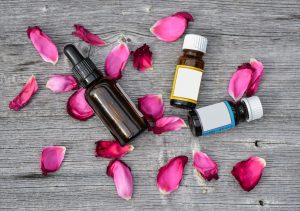
Introducing Kunzea Essential Oil:
The Single Oil That Contains a “Miraculous” Blend

I am going to begin with the newest essential oil added to my favorite essential oils list. Kunzea essential oil is produced from the steam distillation of the leaves and green branchlets of plants unique to the southern coasts of Australia and Tasmania.
One area where this plant was harvested was one of the purest and pristine in the world. Cross-referencing, indeed I found that Australia rates an impressive number 21 out of the all the countries in the world on the Environmental Performance Index (EPI), a project developed by Yale University and Columbia University.
This oil is said to have a spicy and woodsy aroma that is uplifting. It is claimed to be helpful for soothing fatigued muscles, respiratory support, and reducing blemishes on the skin. (source, source, source)
The species discussed of Kunzea ambigua. This is important to note, as we are aware that a plant’s species, chemotype, and the quality measures of its manufacturer will determine what compromises the constituents within the essential oil bottle and its effects.
A study in the Journal of Essential Oil Research validated this. The researchers’ results from GC/MS and GC-FID analyses determined individual variations in constituents among different species, and even between the same species of Kunzea ambigua. The article states (bolded text mine):
Commercial kunzea oil (Ducane kunzea oil) was analyzed by gC/MS and gC-FID and its composition was compared with that of oils from four individual Kunzea ambigua plants and five other Kunzea spp. A total of 64 components were detected in the studied oils. Ducane kunzea oil contained monoterpenes (70%) including α-pinene (48.3%), 1,8-cineole (14.5%) and α-terpineol (1.9%). Oils from individual K. ambigua plants varied significantly in their content of α-pinene (0.6–62.5%), 1,8-cineole (0–11.2%), bicyclogermacrene (0.4–14%), spathulenol (0.5–12.2%), globulol (0.5–22.6%) and viridilflorol (0.3–38%). The oils from fve other Kunzea spp. had significant compositional differences from each K. ambigua oil. Kunzea sp. “Badja Carpet” had a high β-pinene content (56.1%), K. muelleri contained significant levels of allo-aromadendrene (8.0%), spathulenol (7.0%) and, among all the analyzed oils, it had the highest level of bicyclogermacrene (15.7%). Kunzea affinis contained significant levels of p-cymene (26.2%) and γ-terpinene (12.2%). Kunzea parvifolia gave an oil rich in γ-terpinene (36.5%) and p-cymene (5.0%). (An examination of the essential oils of Tasmanian Kunzea ambigua, other Kunzea spp. and commercial kunzea oil. 2011; 22:5, 381-385)
Next, I’ll go into more details about the magical makeup found in this plant. Soon, you’ll understand why some experts proclaim it be a “blend of some of the best oils found in a single oil.” Click here to read Part II.
Additional Resources and References

- Safety First! Please review the resources for essential oils safety here.
- Essential Oils Quality.
- Get an essential oils consult from me. I apply the philosophy and principles of the naturopathic and functional medicine to guide you with which essential oils and supplements will work best for you!
This material is for information purposes only and is not intended to diagnose, treat, or prescribe for any illness. You should check with your doctor regarding implementing any new strategies into your wellness regime. These statements have not been evaluated by the FDA. (Affiliation link.)
Disclaimer: This information is applicable ONLY for therapeutic quality essential oils. This information DOES NOT apply to essential oils that have not been tested for purity and standardized constituents. There is no quality control in the United States, and oils labeled as “100% pure” need only to contain 5% of the actual oil. The rest of the bottle can be filled with fillers and sometimes toxic ingredients that can irritate the skin. The studies are not based solely on a specific brand of an essential oil, unless stated. Please read the full study for more information.
Thanks Pixabay and iStock purchases.



